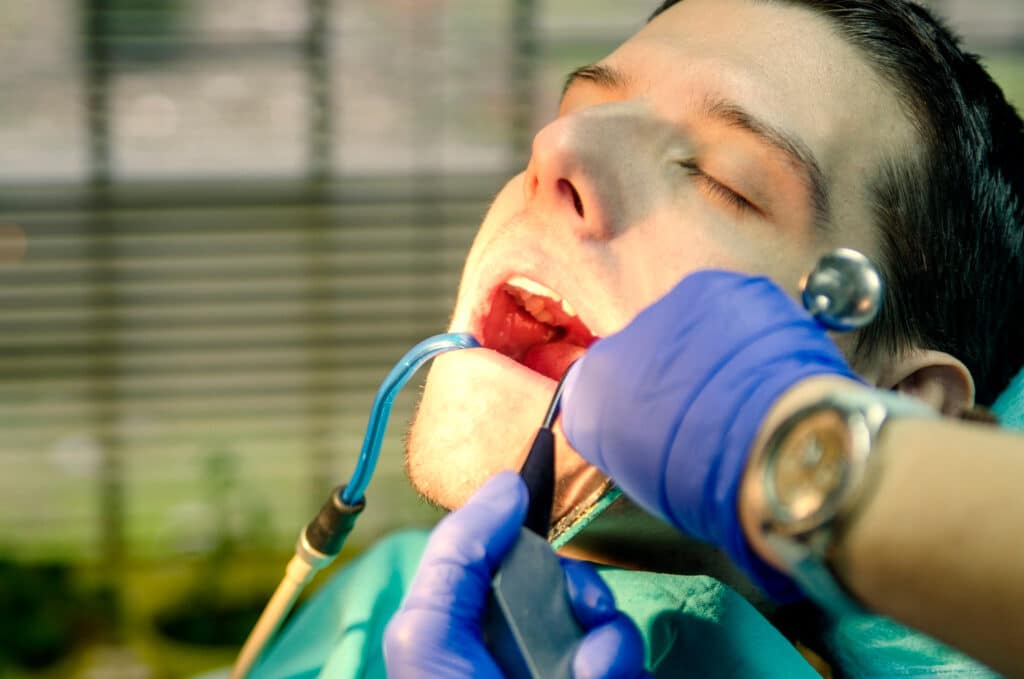Visiting the dentist can be a scary experience for many people. The sound of dental tools, the fear of pain, and even the thought of sitting in the dentist’s chair can cause a lot of anxiety. However, sedation dentistry offers a wonderful way to make these visits much more comfortable and stress-free. By helping you relax, sedation dentistry allows you to receive the dental care you need without the fear and discomfort you might usually feel.
Sedation dentistry involves using medication to help you relax during dental procedures. It is safe and effective and can be tailored to your level of anxiety and the type of treatment you need. Whether you need a simple filling or more complex work like crowns or bridges, sedation can help make the process smoother and more bearable.
Understanding what sedation dentistry is and how it can benefit you is important if you or a loved one experiences dental anxiety. In this article, we’ll explore the basics of sedation dentistry, the different types available, and how it can benefit various patients. By learning more, you can take the first step towards more comfortable and enjoyable dental visits.
Understanding Sedation Dentistry: What It Is and How It Works
Sedation dentistry uses medication to help patients relax during dental procedures. It is sometimes known as “sleep dentistry,” although that is not entirely accurate since most patients remain awake, except for those under general anaesthesia. The level of sedation can vary from minimal (awake but relaxed) to deep (on the edge of consciousness but still responsive).
The process begins with us evaluating your medical history and level of anxiety. Depending on your needs, we will recommend the appropriate sedation method. During the procedure, you will be closely monitored to ensure your safety and comfort. The goal is to perform the dental work while you remain relaxed and free from stress or fear.
The most common types of sedation used in dentistry include nitrous oxide (laughing gas), oral sedatives, and intravenous (IV) sedation. Each type works differently, but they all aim to make your dental experience much more pleasant and manageable. Whether you need a routine cleaning or a more complex procedure like a crown or bridge, sedation dentistry can help you feel calm throughout the process.
Types of Sedation Dentistry and Their Benefits
There are several types of sedation used in dentistry, each offering different benefits. Here’s a closer look at the main types:
1. Nitrous Oxide (Laughing Gas):
– How It Works: You breathe in nitrous oxide mixed with oxygen through a mask placed over your nose.
– Benefits: It helps you relax within minutes without making you fall asleep. The effects wear off quickly, and you can usually drive yourself home after the appointment.
2. Oral Sedatives:
– How It Works: Taken as a pill, typically about an hour before your procedure.
– Benefits: These sedatives help you feel drowsy and calm, although you will stay awake. You might have little memory of the procedure, making it ideal for those with moderate anxiety.
3. Intravenous (IV) Sedation:
– How It Works: Administered through a vein, usually in your arm, allowing the sedative to work quickly.
– Benefits: This method offers a deeper level of sedation compared to oral sedatives or nitrous oxide. You will be in a very relaxed state and may not remember much of the procedure.
Understanding the types of sedation available can help you choose the best option for your comfort and needs. Each type is designed to make your dental visit as stress-free as possible, enabling you to receive essential dental care without the associated anxiety.
Who Can Benefit from Sedation Dentistry?
Sedation dentistry can be beneficial for a variety of people. Here’s a closer look at who might benefit the most:
1. Adults with Dental Anxiety: Many adults experience fear or anxiety when visiting the dentist. Sedation helps you relax so you can receive the necessary treatment without stress.
2. Children: Kids often feel scared or restless during dental procedures. Sedation dentistry can help them stay calm and still, making the experience easier for both the child and the dentist.
3. Patients with a Low Pain Threshold: If you have a low tolerance for pain, sedation can help manage discomfort, making procedures like fillings and crowns more comfortable.
4. People with Sensitive Teeth: Sensitivity can make dental work painful. Sedation minimizes discomfort, allowing for a smoother procedure.
5. Those with a Strong Gag Reflex: A strong gag reflex can interfere with dental work. Sedation helps relax the muscles, making it easier to perform certain procedures.
6. Individuals Requiring Extensive Treatment: For lengthy dental treatments, sedation can help you stay relaxed throughout, especially if multiple procedures are needed in one visit.
Understanding who can benefit from sedation dentistry allows patients to make informed choices about their dental care. If any of these apply to you or your loved ones, sedation dentistry might be a suitable option for making dental visits easier and more comfortable.
How to Prepare for Your Sedation Dentistry Appointment
Preparing for your sedation dentistry appointment involves a few simple steps to ensure everything goes smoothly. Here’s what you need to know:
1. Discuss Your Health History: Share your complete health history with us, including any medications you are currently taking. This helps us choose the safest and most effective sedation method for you.
2. Follow Pre-Sedation Instructions: We will provide specific instructions on what to do before your appointment. This might include fasting for a certain period and avoiding certain medications.
3. Plan for a Ride Home: Most types of sedation can leave you feeling drowsy afterward. Arrange for someone to drive you home after your appointment for your safety.
4. Wear Comfortable Clothing: Dress in loose, comfortable clothes to help you relax during the procedure.
5. Avoid Alcohol and Caffeine: Refrain from consuming alcohol or caffeine before your appointment, as these can interfere with the sedation process.
6. Prepare to Rest Afterwards: Plan to take it easy for the rest of the day after your appointment. Resting helps your body recover from the sedation.
By following these preparation tips, you can ensure a smooth and worry-free sedation dentistry experience. Proper preparation helps maximize the benefits of sedation, making your visit to the dentist much more comfortable.
Final Thoughts
Sedation dentistry can transform your experience at the dentist, making it easier for you to get the care you need without anxiety or discomfort. By understanding what sedation dentistry is, the different types available, and who can benefit from it, you can make informed decisions about your dental health. Preparing for your appointment by following a few simple steps ensures a smoother and more comfortable visit.
At Pickering Dental Services, we are dedicated to providing a relaxed and stress-free environment for our patients. If you think sedation dentistry might be right for you, contact us today to learn more and to schedule an appointment. Our team is here to help you achieve a healthy, beautiful smile with the comfort and care you deserve.



